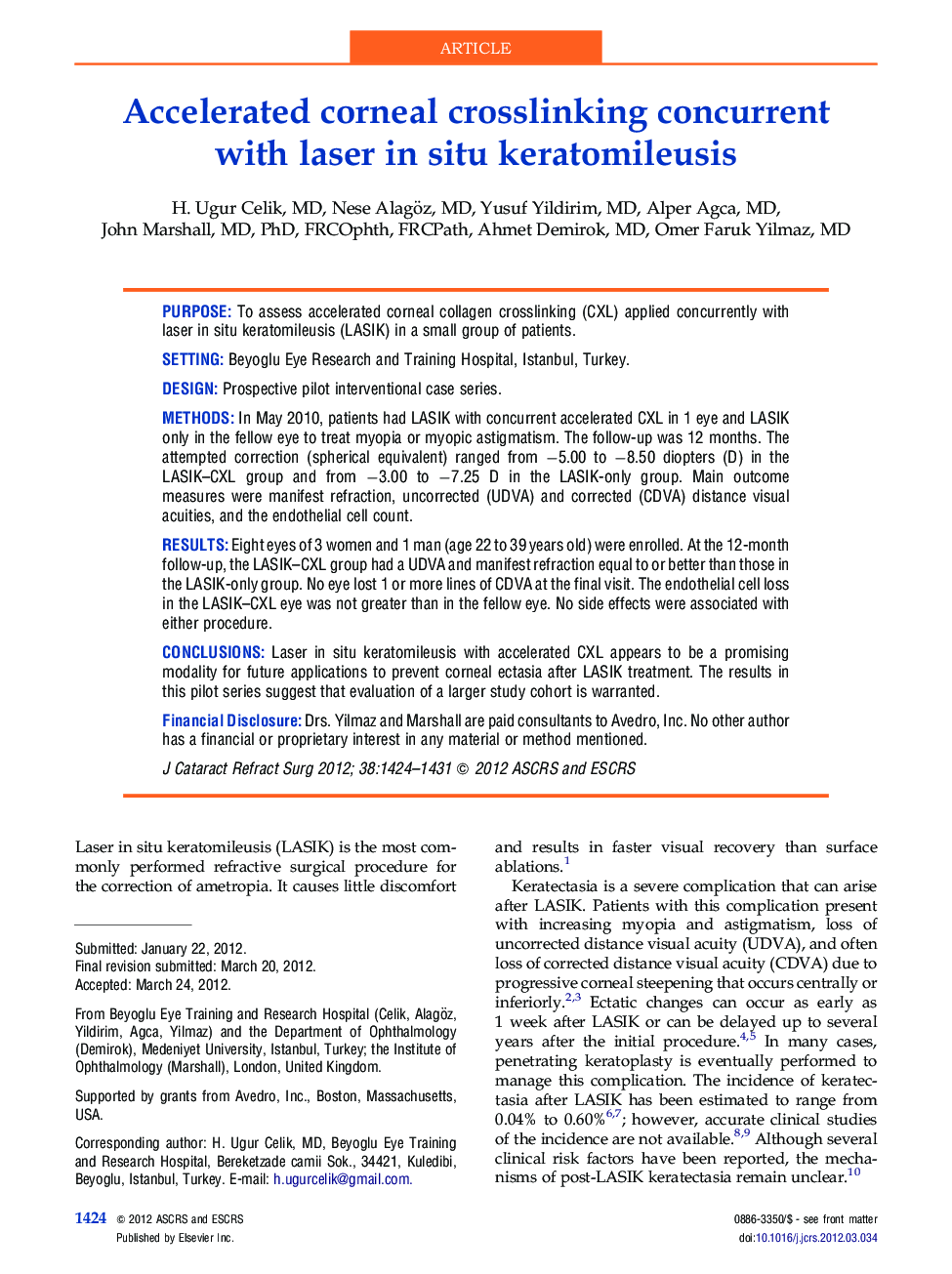| Article ID | Journal | Published Year | Pages | File Type |
|---|---|---|---|---|
| 4017709 | Journal of Cataract & Refractive Surgery | 2012 | 8 Pages |
PurposeTo assess accelerated corneal collagen crosslinking (CXL) applied concurrently with laser in situ keratomileusis (LASIK) in a small group of patients.SettingBeyoglu Eye Research and Training Hospital, Istanbul, Turkey.DesignProspective pilot interventional case series.MethodsIn May 2010, patients had LASIK with concurrent accelerated CXL in 1 eye and LASIK only in the fellow eye to treat myopia or myopic astigmatism. The follow-up was 12 months. The attempted correction (spherical equivalent) ranged from −5.00 to −8.50 diopters (D) in the LASIK–CXL group and from −3.00 to −7.25 D in the LASIK-only group. Main outcome measures were manifest refraction, uncorrected (UDVA) and corrected (CDVA) distance visual acuities, and the endothelial cell count.ResultsEight eyes of 3 women and 1 man (age 22 to 39 years old) were enrolled. At the 12-month follow-up, the LASIK–CXL group had a UDVA and manifest refraction equal to or better than those in the LASIK-only group. No eye lost 1 or more lines of CDVA at the final visit. The endothelial cell loss in the LASIK–CXL eye was not greater than in the fellow eye. No side effects were associated with either procedure.ConclusionsLaser in situ keratomileusis with accelerated CXL appears to be a promising modality for future applications to prevent corneal ectasia after LASIK treatment. The results in this pilot series suggest that evaluation of a larger study cohort is warranted.Financial DisclosureDrs. Yilmaz and Marshall are paid consultants to Avedro, Inc. No other author has a financial or proprietary interest in any material or method mentioned.
